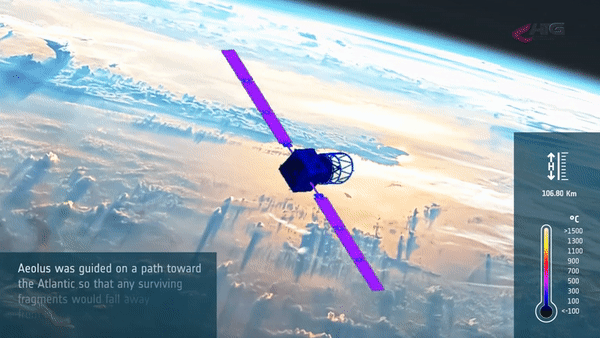Outlook


Access the video
Space is becoming increasingly useful, valuable and even essential to modern society. But we must ensure that it is not just the benefits that we extract from orbit, but also the waste.
Large pieces of space debris pose two types of risk: the short-term risk that they may collide directly with an active satellite, and the long-term risk that they may break down into a cloud of smaller pieces, each threatening to catastrophically damage a satellite.
Even if we launched nothing from now on, collisions among the space debris objects already in orbit would cause the problem to get worse.
Long term, increasing space activity could lead to “Kessler Syndrome” – the situation in which the density of objects in orbit is high enough that collisions between objects and debris create a cascade effect, each crash generating debris that then increases the likelihood of further collisions. At this point, certain low-Earth orbits will become entirely inhospitable.
So, what are doing about it?
Based on the findings of ESA’s yearly report and other studies, there is a growing consensus that we need stricter space debris mitigation practices.
ESA has recently introduced a Zero Debris approach, with the aim of ensuring the Agency’s activities generate no new space debris in valuable orbits by 2030.
The approach encompasses a number of developments related to Agency policy, technological advances and satellite operations that will strongly limit the generation of space debris.
For older pieces of debris, the only solution is “active debris removal”. ESA is purchasing the ClearSpace-1 mission as a service from the Swiss start-up ‘Clearspace SA’ to demonstrate the technologies needed for active debris removal and as a first step to establishing a new and sustainable commercial sector dedicated to removing high-risk objects from our valuable and limited orbital highways.
ClearSpace-1 will be the first mission to remove a piece of space debris from orbit. The spacecraft will rendezvous with, capture and safely bring down a 112 kg defunct rocket part, launched in 2013, for a safe atmospheric reentry.
Just like with the reentry of Aeolus, ESA seeks to demonstrate that a more sustainable approach is possible, even in challenging circumstances. The Agency hopes that by leading by example, it can encourage other space operators and manufacturers to adopt similar practices for the better of all.



